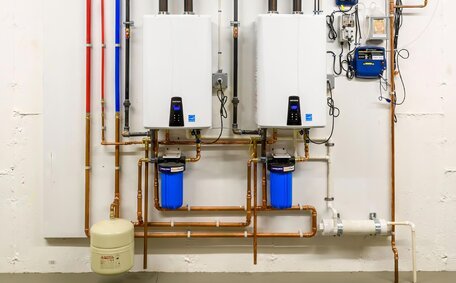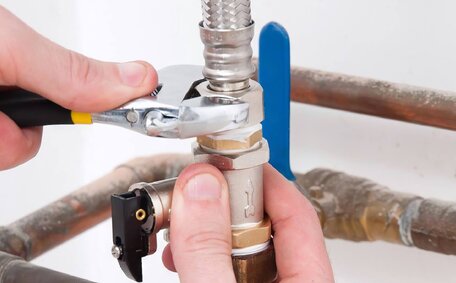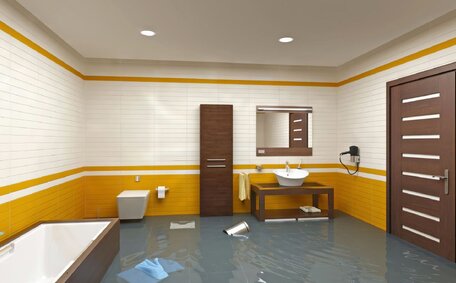Introduction to Hot Water System Insulation
Insulation is essential for hot water system efficiency. At Bella Vista Plumbing, we specialise in installing and maintaining insulated hot water tanks and pipes. Insulation plays several key roles when it comes to hot water systems:
- Energy Conservation - Insulation dramatically reduces standby heat loss from both the tank and pipes, meaning less energy is required to keep water hot. This saves homeowners money on energy bills.
- Temperature Maintenance - Insulating your hot water system prevents the water from cooling rapidly once heated. This allows you to enjoy hot showers and efficient dishwashing without interruption.
- Cost Savings - Reducing wasted standby energy translates into lower running costs over time. Insulated systems can save the average home up to 25% on water heating costs.
This guide details the principles of hot water insulation, with practical tank and pipe tips, pipe lagging benefits, DIY instructions, and professional advice.
Understanding Heat Loss in Hot Water Systems
All hot water systems experience heat loss, leading to higher energy usage to sustain temperature. Water temperature loss primarily occurs in two areas:
Water Storage Tanks
Most hot water systems have an insulated storage tank that holds hot water ready for use. However, some standby heat is inevitably lost through the tank walls and lid over time as the temperature drops.
Pipes and Plumbing
Long runs of piping, such as those leading to bathrooms, lose heat, resulting in water wastage and increased energy use for reheating.
While modern systems feature improved insulation, completely eliminating heat loss is impossible. Insulation helps dramatically slow this heat transfer. Keeping pipes as short as possible also limits wastage. Speak to our experts about insulation options to save on your energy bills.
Insulating Your Hot Water Tank
Adding insulation to your hot water tank is one of the most impactful upgrades you can make. The right insulation dramatically slows standby heat loss, allowing the tank to maintain temperature better between heating cycles. This results in notable energy bill savings over time.
Recommended Insulation Levels
Industry guidelines recommend tanks have at least R3.0 insulation. Modern tanks often come with R3.5 or higher from manufacturers.
Upgrading insulation should be considered when:
- Replacing an older tank
- Your current tank has less than R2.5 insulation
- You have extremely cold winters
DIY Installation Steps
Insulating an existing tank is a doable DIY project. Here are the step-by-step instructions:
- Purchase a tank insulation kit suitable for your model.
- Switch off water and power supply to the tank.
- Open the outer jacket and carefully remove any old lagging.
- Clean the surface thoroughly before installing new insulation.
- Apply the adhesive backing and wrap insulation around the tank.
- Secure neatly using tape and clamps as required.
- Replace the protective outer jacket over the new insulation.
- Reinstate water and power before use.
Adhering to professional standards during installation is essential for safety and effectiveness. Contact our team at Bella Vista Plumbing if you have any concerns.
Materials and Installation
A variety of effective insulation materials are available for hot water tanks and pipes:
Common Insulation Materials
- Polyethylene Foam - Flexible, moisture-resistant foam that comes in pipe and sheet forms. Easy DIY installation.
- Glass Wool Insulation - Fibrous insulation made using recycled glass. Effective but requires safety precautions when handling.
- Flexible Elastomeric Foam - Closed-cell foam offering excellent resistance to heat transfer and moisture.
- Reflective Insulation - Foil laminate that reflects heat back into the system. Used in addition to other insulation.
Installation Guidelines
When insulating water heaters, consider these guidelines:
- Cover 100% of the tank and/or pipes for best results.
- Seal edges with aluminium tape to prevent moisture ingress.
- Be mindful of sensor wires, thermostats and heating elements. Do not cover these.
- Consider professional help for pipe insulation in difficult to reach spots.
The team at Bella Vista Plumbing are skilled in efficient insulation installation. For professional advice on material selection or installation, give our friendly staff a call.
Benefits of Insulation
Installing quality insulation on your hot water system provides numerous important benefits for homeowners:
Reduced Heat Loss
Adding insulation dramatically minimises standby heat loss from the tank and pipes. This allows the system to retain more heat in storage, saving energy.
Lower Running Costs
Slowing heat transfer conserves energy otherwise spent on reheating water, with insulated systems using 25% less energy and potentially saving homes up to $200 annually.
Enhanced Water Temperature
Maintaining heat for longer also delivers hotter water at the tap. Insulated pipes supply water up to 4°C warmer straight to your shower.
Bella Vista Plumbing offers expert insulation installation and maintenance for dependable hot water systems. Contact us today!
Pipe Lagging for Energy Efficiency
Pipe lagging is insulation wrapped around hot water pipes to reduce heat loss in transit. As hot water flows from the tank to your taps, uninsulated pipes lose heat. Lagging pipes decreases wasted energy and keeps water hotter longer.
Benefits of Pipe Lagging
Pipe lagging provides several benefits:
- Lower energy bills - Less heat is lost in transit, so your system uses less power maintaining temperature.
- Hotter water output - Lagging delivers water that’s approximately 4°C warmer directly to your taps.
- Easy DIY install - Pipe insulation is simple for homeowners to fit themselves using adhesive backing.
DIY Installation Tips
For effective pipe lagging, follow these steps:
- Measure and cut insulation to size based on your pipework.
- Secure firmly along the length using included adhesive backing.
- Seal edges thoroughly with aluminium tape to prevent moisture issues.
- Avoid covering sensors, valves or joints that require regular access.
Combined with tank insulation, pipe lagging maximises the use of your system’s heated water. Contact our team at Bella Vista Plumbing if you need a hand maximising your hot water efficiency.
Lagging Materials and Standards
Selecting pipe lagging materials should involve choosing products meeting safety and efficiency standards. The right insulation makes a big difference in preventing costly heat loss from your hot water system.
Common Lagging Materials
- Polyethylene Foam - Flexible, moisture-resistant foam pipes suitable for DIY installation. Rated for temperatures up to 95°C.
- Class O Rigid Foam - Rigid foam wraps in various thicknesses, meeting Class O fire safety standards.
- Glasswool Insulation - Effectively reduces heat loss but requires precautions when handling. Available in pipes or rolls.
Standards for Quality
When purchasing lagging materials, check ratings like:
- Fire hazard ratings - Materials should meet Class O standard or higher.
- Temperature ratings - Choose products designed for hot water systems, rated to at least 85°C .
- Conforms to AS 4859.1 - Australian standard for insulation. Ensure materials meet regulations.
Adhering to quality standards ensures your insulation performs safely and effectively. For guidance selecting materials or professional installation, the licenced plumbers at Bella Vista Plumbing can assist.
Installing Pipe Lagging
Most DIY enthusiasts can easily handle pipe lagging installation. However, for optimal results we recommend utilising professional services.
Step-by-Step DIY Pipe Lagging
Follow these instructions to insulate your hot water pipes:
- Measure your pipe lengths and diameters to calculate the amount of lagging material needed.
- Purchase lagging such as polyethylene foam pipe insulation with adhesive backing.
- Clean pipe surfaces thoroughly before installation.
- Cut lagging to size allowing sufficient overlap and seal edges with aluminium tape.
- Wrap tightly around pipes pressing adhesive backing firmly in place.
- Mitre corners to minimise heat loss and ensure there are no gaps.
- Avoid covering pipe joints, valves sensors and other accessories.
The licensed Bella Vista Plumbing professionals provide reliable pipe lagging installation services for peak efficiency.
Complementary Energy Saving Strategies
In addition to insulation, there are multiple strategies to further improve your hot water system’s energy efficiency:
Adjust Thermostat Settings
Thermostat settings between 50°C and 60°C can significantly conserve energy required for water heating. Also consider installing a timer to turn off heating elements during low-use periods.
Service & Maintain Your System
Regular professional servicing not only clears sediment but optimises system operations, enhancing hot water delivery and cutting electricity usage.
Upgrade Old Appliances
Combining proper insulation with efficiency-focused appliances, settings and maintenance ensures you maximise energy savings for your home or business. For customised advice optimising your hot water system, the licenced technicians at Bella Vista Plumbing are happy to help. Contact us today.
Professional vs. DIY Installation
Homeowners deciding on hot water system insulation often contemplate whether to pursue DIY installation or engage professionals. While both options have their merits, it’s essential to weigh the advantages and limitations before making a decision.
DIY Installation
DIY insulation can appeal to skilled homeowners aiming to save on labour costs. It allows for flexibility in scheduling and provides a sense of accomplishment upon completion. Basic insulation tasks, such as wrapping hot water pipes with lagging material, can be completed by most individuals with minimal guidance.
Professional Installation
On the other hand, professional installation offers numerous benefits that make it a worthy investment. By engaging licenced technicians like those at Bella Vista Plumbing, homeowners can ensure their hot water system is insulated safely, efficiently, and in compliance with industry standards.
Safety First
Professional installation guarantees that your system is insulated without risking damage to components or personal injury. Technicians are trained to handle materials carefully, avoiding contact with heating elements, valves, and sensors.
Quality and Efficiency
Expert installers possess the knowledge and experience to select appropriate materials and insulation levels, ensuring optimal energy savings. They also have access to specialised tools and equipment, which may not be readily available to homeowners. This results in a more efficient and effective insulation solution.
Peace of Mind
Using our licensed professionals for your hot water system insulation ensures a job well done, in line with the highest industry standards. Additionally, most reputable companies offer warranties on their work, protecting homeowners from potential issues down the line.
The choice between professional and DIY insulation installation hinges on personal circumstances and skill levels. For homeowners seeking a hassle-free, high-quality insulation solution, professional services are the way to go.
For more information or to request a quote for Bella Vista Plumbing’s insulation services, contact us at [email protected] or call 1300 349 338. Our team of licenced technicians is always ready to help you make the most of your hot water system.






